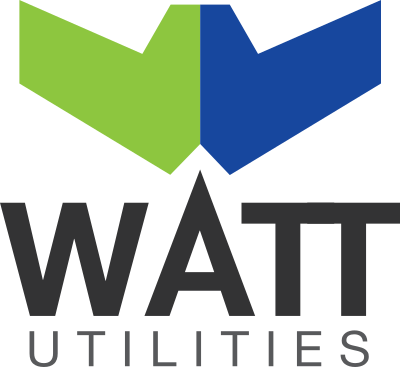
In today’s rapidly evolving energy landscape, embedded networks are emerging as a key solution for efficient energy management. This concept is gaining momentum across Australia as a practical approach to reduce costs, simplify billing systems, and integrate sustainable energy practices within multi-tenant environments. In this edition of Watt’s News, we explore what embedded networks are, how they operate, their pros and cons, and the steps involved in their implementation.
Embedded networks are essentially private electricity networks within shared spaces, for example in apartment complexes, townhouse developments, commercial properties, retirement villages, caravan parks and retail centres. This private electricity network has a single connection to the grid through a primary ‘parent’ metre, which supplies electricity to multiple child metres located in individual units. An Embedded Network Manager (ENM), who is generally the property owner/manager or body corporate, oversees the operation, ensuring accurate billing and efficient energy use. This configuration allows properties to access bulk wholesale energy rates and manage energy distribution centrally, which we will explore next.
One of the significant advantages is the ability to purchase electricity in bulk, often with significant cost savings compared to individual retail arrangements. Coupling this with the attractive wholesale electricity rates we have access to as leading energy brokers, this setup not only allows for potentially large cost savings, but consolidates energy purchasing for collective benefit. These savings can be passed onto the end user, or retained as income for the owner, or a combination of both.
Energy is distributed to various units via their respective child metres, which measure individual consumption. A centralised management system ensures accurate billing and simplified administration for property managers or owners.
Adding renewable energy sources like solar panels or battery storage further enhances the benefits of embedded networks. Such integrations reduce dependency on grid supplies and support environmental targets and sustainability initiatives. Moreover, the potential for owners to generate additional income grows with the installation of more self-generating or energy-storing infrastructure, as this decreases the amount of power required from the grid.
Embedded networks in Australia operate under specific regulatory guidelines established by the Australian Energy Regulator (AER). Embedded network owners who on sell energy are typically referred to as “exempt sellers” since they are not required to obtain authorisation as energy retailers from the AER. Nonetheless, they must secure a valid exemption from the AER and adhere to specific regulations designed to safeguard your consumer rights. These ensure consumer protection, fair pricing, and the right for tenants to choose their energy providers. The AER provides oversight and guidance to ensure that embedded networks operate transparently and that customers are well supported. More information about consumer rights for residential and commercial tenants can be found on the Australian Energy Regulator (AEC) website here: https://www.aer.gov.au/consumers/understanding-energy/embedded-networks-customers
Navigating these regulations is crucial for successful implementation and operation of embedded networks, rest assured Watt Utilities will guide you every step of the way.
We conduct a full assessment to identify potential gains and determine your infrastructure needs — considering factors like building size, energy consumption patterns, effective management and potential cost savings.
Develop a comprehensive plan that includes grid connections, metering infrastructure, and management systems.
Secure the necessary permissions from regulatory bodies and local authorities, ensuring compliance with national energy standards.
Install metering systems, establish the parent metre connection, and integrate any renewable technologies.
Implement a robust management system to monitor consumption, handle billing, and provide customer support.
Residents and businesses within embedded networks have specific rights, including transparent billing, competitive pricing, and the ability to opt-out. The benefits encompass reduced energy costs through bulk purchasing, increased sustainability through renewable integration, and streamlined operational management.
Embedded networks present a forward-thinking approach to energy management, offering multiple benefits for both consumers and property managers. They represent not just cost savings and convenience, but a step towards a more customised, sustainable and energy-efficient future.
Watt Utilities offers expertise in every phase of embedded network implementation, from initial feasibility assessments to management and support. With our and our qualified partners extensive experience in the energy sector, we provide tailored solutions designed to maximise efficiency and savings for our clients. Contact us to learn how we can make embedded networks work for you.



Fields marked with * are required.

Fields marked with * are required.